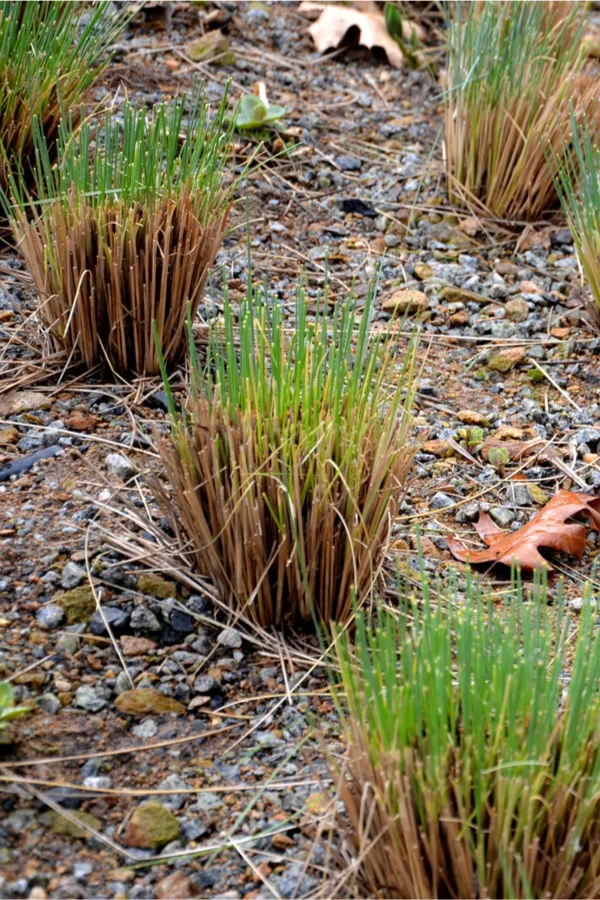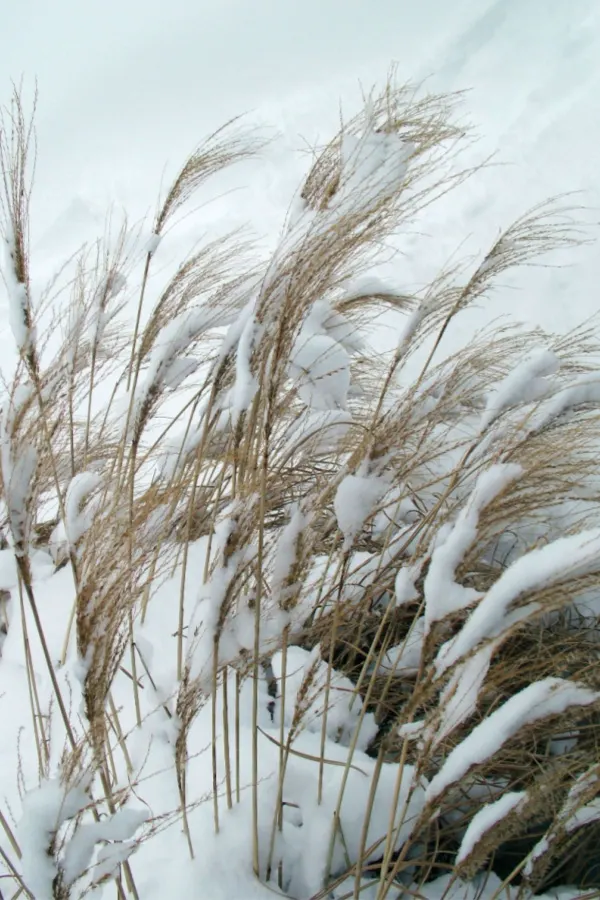Wondering when is the best time to cut back your ornamental grass plants? Is it in the fall when they first die back? The winter when they are completely dormant? Or in the early spring right as they begin to sprout and grow once again?
There is a lot of conflicting information about when grasses should be cut back, how they should be cut back – and even in some circles, whether they should be cut back at all. And those questions start heating up each and every fall just as all of those grasses plume and begin to brown off.
One thing is for sure, ornamental grasses have become one of the most popular perennial plants, if not the most popular perennial plant to plant in home landscapes in the past decade. And for some very good reasons.

Not only are grasses drought and deer resistant, but pests rarely bother them. Even better, they require very little care when it comes to ongoing maintenance. They also happen to be easy to divide and transplant – making it quite inexpensive to fill flowerbeds all over the landscape for free!
It’s one of the reasons we love and use them all over our farm. With the wide variety of sizes and shapes that you can grow with ornamental grasses, they can be used anywhere. Small grasses are perfect for edging and borders – while mid-size and large grasses can fill the landscape with big, bold interest.
But as beautiful as they look, and as easy as they are to grow – the one chore that gardeners wonder most about is when and how to cut them back. And that is exactly what today’s article is all about!
How To Know When To Cut Back Ornamental Grass
Should Grasses Be Cut Back Every Year?
For starters, ornamental grasses should be cut back to the ground each and every year. As you will see below, although you can successfully do this at different times, cutting them back helps the grasses to rejuvenate more quickly. Even more, it helps keep their appearance more upright and tidy.
Ornamental grasses grow back from the surface each year. When the old grass remains up top, it can snuff out early growth. It also can cause the new blades to grow around the old clumps of grass, making them look less than ideal.

When Can Grasses Be Cut Back?
Now let’s tackle the question of when is the best time for cutting back ornamental grasses. The short answer is that ornamental grasses can be cut back almost any time after they start to die back. That can be in early or late fall. In early or late spring. And, yes, they can even be trimmed down in the dead of winter during a driving snow storm if you so choose.
The point is, the clump style root systems of ornamental grasses are extremely hardy. So much so that they simply do not need any protection from their foliage on top to insulate them from the harsh conditions of winter.
As for the best time to cut them back – as it turns out, as you will see below, it really depends on your specific landscape and situation. With that in mind – here is a look at the pros and cons of cutting your grasses back in the fall, winter or early spring.
Keeping Grasses Up Through Winter – How To Know When To Cut Back Ornamental Grass
Keeping your grasses up through winter has several benefits. For starters, most varieties of ornamental grasses do not plume until mid to late fall. And when they do, they can be stunning in the landscape all the way deep into winter.

The large plumes and stocky grass foliage are great for adding texture and interest to an otherwise bare winter landscape. But in addition to their beauty, they also are extremely beneficial to winter wildlife.
Allowing your ornamental grasses to stay up provides much needed protection for all kinds of animals. And the seed heads of those grasses are wonderful for providing birds with food as well. For these reasons, many gardeners leave their grasses up until early spring.
Cutting Back Grasses In The Fall – How To Know When To Cut Back Ornamental Grass
With all of those pros for keeping grasses up through winter, you might wonder why anyone would want to cut ornamental grasses back in the fall. But, in some situations, it makes good sense to cut grasses back early.
Anyone who has ornamental grasses growing in their yard knows the mess that some grasses can create over the long winter months. Especially large varieties with their huge plumes.
As the plume heads and stems begin to break down, they scatter everywhere. And it can make for quite the headache when it comes to cleaning out spring flowerbeds!
For us, it has always been a compromise when it comes to cutting back. With the grasses in flowerbeds and up close around our home, we cut back in late fall to avoid the spring mess. And for those away from the house, we leave the grasses in place until spring to provide a bit of winter interest and food for the birds.
But if you do decide to cut back your grasses in the fall – one thing you don’t want to do is try to divide them! Unfortunately, when it comes to dividing ornamental grasses, fall is not the time for dividing. Unlike most perennial plants that thrive with fall division, dividing grasses in the fall can be deadly for the plants. See: Dividing Perennials In The Fall – How To Create More Plants For Free!
With their root clumps split, they are not able to re-establish in the soil. And because of this, the roots freeze out when the cold of winter sets in. The best time for splitting grasses in early spring, just as new growth begins to set forth from their base.
The Best Way To Cut Back Ornamental Grasses
Whether you cut your grasses back in the spring, winter or fall, one of the easiest ways to cut back your grass stands is with a good pair of electric hedge trimmers. Forget that back breaking work with hand shears – hedge trimmers make quick work of sawing right through the grasses with ease. Product Link : Electric Hedge Shears

We usually cut our grasses with a two prong approach. First, we cut off the grass heads up top to remove the plumes and seed heads. We do this so we can keep any seeds out of our compost pile. Unfortunately, the seed heads can create an issue later in the compost.
Next, we cut the remaining stems of the grasses down to within a few inches of the ground. This material is actually great for the compost pile, especially if you shred it up a bit with a shredder or lawn mower.
The last few years, we have been cutting up the thick grass strands and saving some to use in the bottom of our potted plants. They are great for keeping drainage holes open and filling some of the bottom space!
Here is to keeping your ornamental grasses strong, healthy and beautiful, no matter when you choose to cut them back! Happy Gardening – Jim and Mary
Jim and Mary Competti have been writing gardening, DIY and recipe articles and books for over 15 years from their 46 acre Ohio farm. The two are frequent speakers on all things gardening and love to travel in their spare time.
As always, feel free to email us at thefarm@owgarden.com with comments, questions, or to simply say hello! You can sign up for our free email list in the subscribe now box in the middle of this article. Follow us on Facebook here : OWG Facebook. This article may contain affiliate links.

